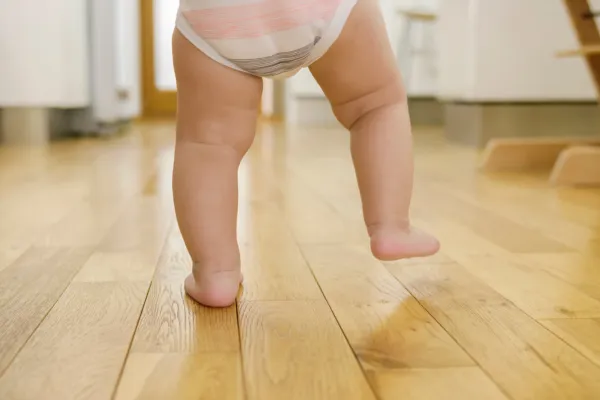
Helping Little Feet Take Big Steps: How Practically Perfect Physical Therapy Supports Infants Learning to Walk
Helping Little Feet Take Big Steps: How Practically Perfect Physical Therapy Supports Infants Learning to Walk
Watching your baby take their first steps is one of the most exciting milestones of early childhood. But before that magical moment, there’s a journey filled with wobbles, falls, and lots of practice. While most babies learn to walk on their own between 9 and 18 months, some need a little extra support along the way. That’s where pediatric physical therapy comes in.
Physical therapy for infants isn’t just about teaching a child to walk—it’s about supporting their motor development, building strength, improving balance, and nurturing confidence. When walking is delayed or not progressing as expected, a pediatric physical therapist can assess your baby’s movement patterns and help them build the skills needed for independent mobility.
When Is Physical Therapy Needed?
It’s important to remember that all babies develop at their own pace, but if your child is not pulling to stand by around 12 months or walking by 15 months, it may be time to seek an evaluation. Other signs that PT might help include:
Toe-walking or walking on the sides of the feet
Uneven or asymmetrical movement (favoring one side)
Stiffness or low tone (floppiness)
Frequent falls or trouble with balance
A history of prematurity or developmental delays
Physical therapy isn’t just for babies who aren’t walking—it can benefit any child who needs help building the foundational skills for safe, confident movement.
How Physical Therapy Helps Infants Walk
A pediatric physical therapist begins by evaluating your baby’s strength, joint mobility, balance, posture, and movement patterns. Based on this, they create a play-based treatment plan to encourage motor development in a fun and functional way.
Key focus areas might include:
Core and leg strengthening to support upright posture and weight bearing
Balance training through dynamic play (like reaching while standing or cruising along furniture)
Coordination and timing of movement to help with shifting weight and stepping
Sensory input and proprioception to help babies feel where their bodies are in space
Motor planning to support transitions like sitting to standing, cruising to walking
Therapists use toys, obstacle courses, songs, and positive reinforcement to make therapy engaging and motivating. Parents are also guided through activities they can do at home to keep progress going.
Supporting the Whole Child and Family
One of the most valuable parts of pediatric physical therapy is the support we provide to parents. Learning that your baby may need help walking can be emotional and stressful. Our pediatric physical therapists not only work with your child, but also partners with you—answering questions, addressing concerns, and offering encouragement every step of the way.
Physical therapy also considers your baby’s whole-body development—not just walking. Many infants also improve their confidence, attention, sensory processing, and social engagement as they gain more independence through movement.
Encouraging Progress at Home
Whether your baby is already in therapy or you're simply looking to encourage walking at home, here are a few tips:
Let your baby play on the floor as much as possible—limit time in containers like bouncers or walkers.
Encourage barefoot time to help with foot and ankle strength and sensory feedback.
Set up safe environments for your baby to cruise, climb, and explore.
Celebrate every small success—progress may look different for every child, but every step counts.
Final Thoughts
Physical therapy plays a powerful role in helping infants reach important motor milestones like walking. With skilled guidance, supportive encouragement, and playful strategies, babies who are struggling to take those first steps can build the strength, balance, and confidence they need to get moving.
If you have concerns about your baby’s walking, give us a call at 609-300-3963. Together, we can help those tiny feet get ready for big adventures.
